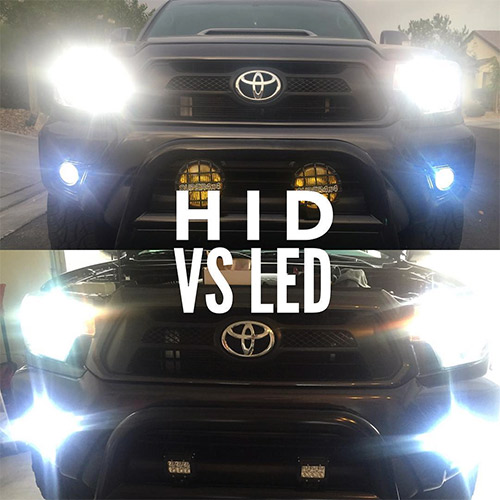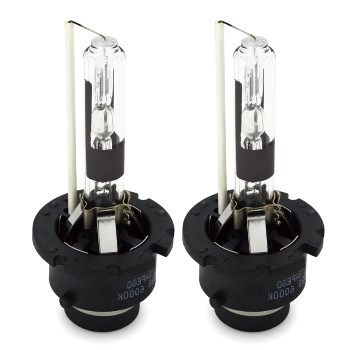The Main Principles Of Kensun Hid Reviews
Table of ContentsLittle Known Questions About Kensun Hid Reviews.See This Report about Kensun Hid ReviewsOur Kensun Hid Reviews Diaries
Headlamps that satisfactorily illuminate the roadway ahead without triggering glare have long been sought. The first services involved resistance-type dimming circuits, which reduced the strength of the headlamps. This yielded to tilting reflectors, and later to dual-filament bulbs with a high and a low beam. In a two-filament headlamp, there can only be one filament precisely at the focal point of the reflector.One filament is located at the centerpiece of the reflector - kensun hid reviews. The other filament is moved axially and radially away from the focal point. In most 2-filament sealed beams and in 2-filament exchangeable bulbs of type 9004, 9007, and H13, the high-beam filament is at the centerpiece and the low-beam filament is off focus.
Transverse-filament bulbs such as the 9004 can just be utilized with the filaments horizontal, however axial-filament bulbs can be rotated or "clocked" by the headlamp designer to optimize the beam pattern or to effect the traffic-handedness of the low beam. The latter is achieved by clocking the low-beam filament in an upward-forward-leftward position to produce a right-traffic low beam, or in an upward-forward-rightward position to produce a left-traffic low beam.
Positioning the low beam filament at the centerpiece to maximize light collection by the reflector, and positioning the high beam filament slightly rearward-rightward-downward of the focal point. The relative directional shift between the 2 beams is the exact same with either technique in a right-traffic country, the low beam is slightly downward-rightward and the high beam is a little upward-leftward, relative to one another but the lens optics should be matched to the filament positionings chosen.
The high beam filament is on the focal point, while the low beam filament is around 1 cm forward of the centerpiece and 3 mm above the axis. Below the low beam filament is a cup-shaped shield (called a "Graves guard") spanning an arc of 165. When the low beam filament is brightened, this shield casts a shadow on the corresponding lower area of the reflector, obstructing down light rays that would otherwise strike the reflector and be cast above the horizon.
This is utilized to produce the upsweep or upstep quality of ECE low beam light circulations. The bulb's rotative position within the reflector depends upon the kind of beam pattern to be produced and the traffic directionality of the market for which the headlamp is planned. This system was first utilized with the tungsten incandescent Bilux/Duplo R2 bulb of 1954, and later on with the click here to find out more halogen H4 bulb of 1971.
These are physically and electrically interchangeable with H4 bulbs. Similar optical strategies this contact form are used, however with different reflector or lens optics to develop a United States beam pattern instead of a European one. Each system has its advantages and disadvantages. The American system historically permitted a higher overall quantity of light within the low beam, given that the entire reflector and lens area is used, however at the very same time, the American system has actually typically provided much less control over upward light that causes glare, and because of that has actually been largely declined outside the US.
9 Easy Facts About Kensun Hid Reviews Explained
The high beam is generally a rough copy of the low beam, shifted somewhat upward and leftward. The European system typically produced low beams consisting of less total light, since just 60% of the reflector's area is utilized to produce the low beam. However, low beam focus and glare control are much easier to attain.

Complex-reflector innovation in mix with new bulb styles such as H13 is enabling the creation of European-type low and high beam patterns without using a Graves Shield, while the 1992 United States approval of the H4 bulb has made traditionally European 60%/ 40% optical location departments for low and high beam typical in the US.

The shade might be decreased by a solenoid activated pivot to offer low beam, and removed from the light path for high beam. Such optics are called BiXenon or BiHalogen projectors. If the cutoff shade is repaired in the light path, separate high-beam lamps are needed. The condenser lens may have slight fresnel rings or other surface treatments to minimize cutoff sharpness.


The main disadvantage of this kind of headlamp is the need to accommodate the physical depth of the assembly, which may extend far back into the engine compartment. The very first electric headlamp light was the tungsten filament, operating in a vacuum or inert-gas atmosphere inside the headlamp bulb or sealed beam.
Top Guidelines Of Kensun Hid Reviews
Also, throughout normal operation of such lights, tungsten boils off the surface area of the filament and condenses on the bulb glass, blackening it (kensun hid reviews). This decreases the light output of the filament and blocks a few of the light that would go through an unblackened bulb glass, though blackening was less of an issue in sealed beam units; their large interior area reduced the density of the tungsten build-up.